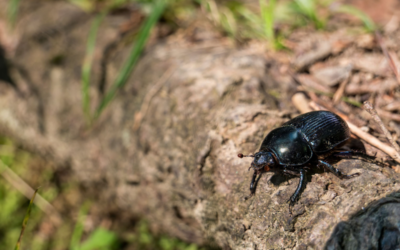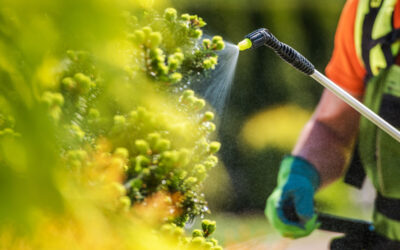Don’t be Suckered by Aspens
The aspen tree screams Colorado causing flatland homeowners along the Front Range to crave them on their property. That’s usually a bad idea for a couple of reasons. First, they don’t adapt well to the hot, dry plains climate, preferring cool moist locations 6,500 feet and higher. Second, they regenerate through sprouts or suckers that emerge from their roots as “volunteers” in potentially unwanted places. These suckers are clones of the parent tree that share the same root system, so when they’re removed, the parent’s root system is damaged and can lead to its early demise. For a similar alternative without the headaches, look at the Bigtooth maple.
Sumac Fatigue
Face it, most native Colorado deciduous trees are pretty boring in the fall. To break up the monotonous yellows, many people look to Staghorn and other varieties of fast-growing sumac for their fern-like leaves that turn fiery red in autumn. Both the taller smooth-leaf variety and the shrubby Staghorn can be brilliant and hardy additions to a landscape but maintaining them as single specimens can be an ongoing task. Suckers need to be periodically cut or treated chemically, a task best left to professional arborists who know how to do it without endangering nearby plants and waterways. The good news is that after a few years of frustration, the tree will probably give up and stop sending out suckers.
Heavenly Horrors
Often confused with sumacs, Ailanthus trees (also known as Tree of Heaven) are marketed as fast-growing, spring-flowering trees. While they can be attractive at first, they soon reveal their hidden horrors. Those pretty flowers give off an acrid aroma akin to neglected kitty litter and that inhibits the growth of other plants. Its rapid growth leads to weak, unstable branches as it crowds out other plants. If you want the look, go with a real sumac. They’re high-maintenance, but at least they’re strong and don’t smell bad.
Speaking of Stinky
Now considered a noxious weed and banned from sale in Colorado, Russian olive trees were widely planted as both landscape trees and as windbreaks due to their tolerance of poor soils and drought. Their silvery leaves and spring flowers are attractive, but as they became established in the state, their shortcomings were evident. They spread by suckers and their seeds are prolific, sprout readily and are widely spread by birds, who like feeding on the berries. That’s led to the tree’s aggressive spread to rural areas where it crowds out native growth. Plus those flowers give off an aroma that many people find unpleasant. If you like the silvery, spiky look of the Russian olive, Colorado State University has some alternatives without the downsides.
Confused? Call a Pro
Planting trees is a long-term investment so think ahead when you choose them and where they go. Hiring a professional arborist or landscape designer will protect that investment by choosing trees and plants that will show off your property to its best advantage while giving you the outdoor environment you want.
Donovan Arborists can help you choose the trees that suit your landscape and help you keep them healthy for generations to come. We offer planting and landscape management services for homeowners and property managers throughout the Denver area. Our motto of “Right Tree, Right Place” saves on maintenance and care while adding beauty, value and memories to your landscape.
We’re happy to give free estimates for any services you may need. Use our convenient online form or call us at 303-623-TREE to speak personally with a certified arborist.




